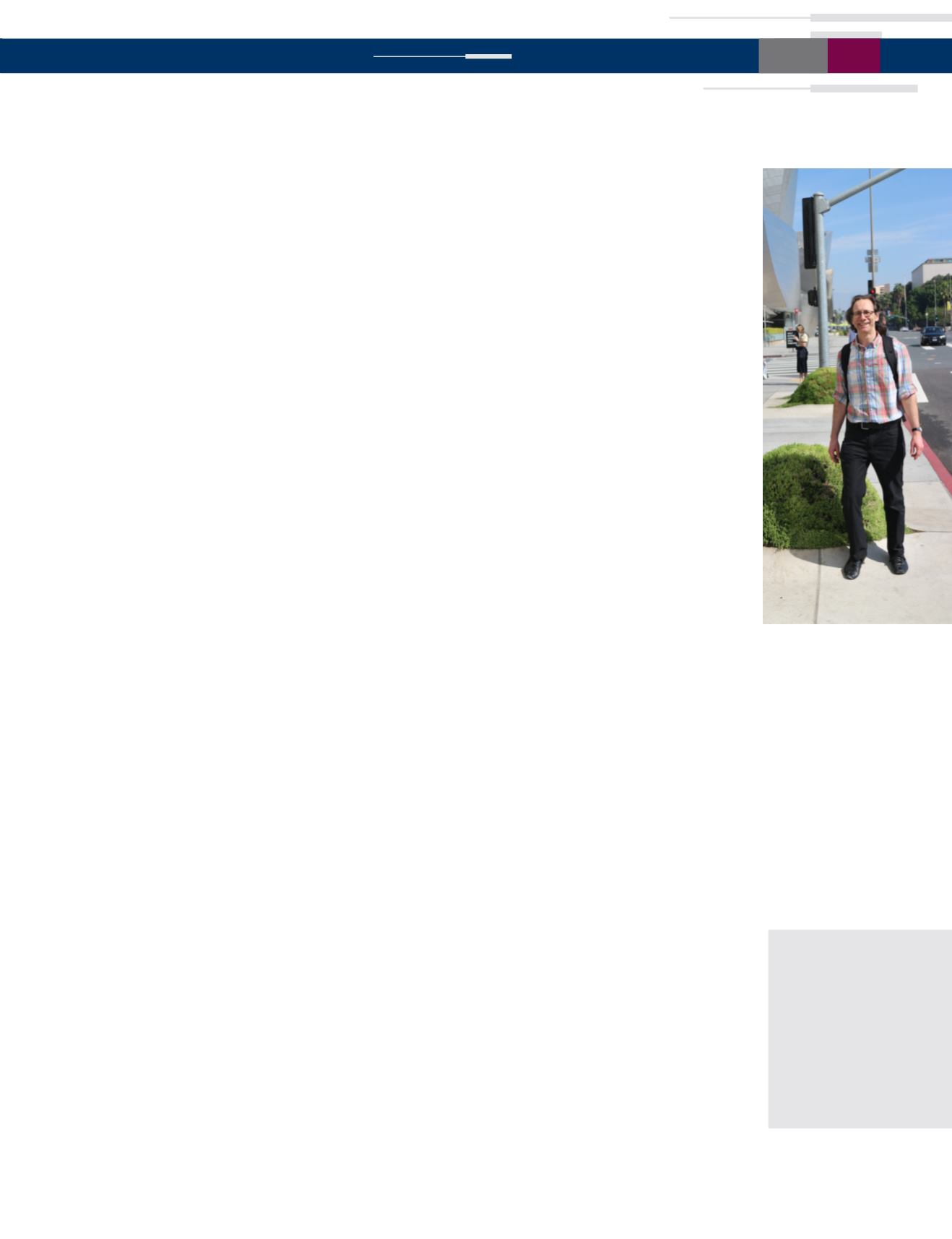

BIOPHYSICAL SOCIETY NEWSLETTER
3
MAY
2017
Profilee-at-a-Glance
Institution
Université de Montréal
Area of Research
Physical chemistry of
lipid self-assembled
systems
Following his postdoc, Lafleur was offered a posi-
tion at Université de Montréal, so he returned to
his hometown. “Currently, I am a full professor
in the chemistry department of the Université de
Montréal. I am happy with this position. Mon-
tréal has just been identified last February as the
best university student city in the world by the
Quacquarelli Symonds Institute. It is a stimulat-
ing environment to carry out research,” he shares.
“Soft materials science is a well-established field in
our university so there is an exciting momentum:
several great colleagues, a good bunch of enthusi-
astic students, and a great instrumental infrastruc-
ture.”
Lafleur’s lab is currently conducting research in
three areas. First, they are working at gaining a
better understanding of the relationship between
the structure and the function of skin lipids. “Skin
involves several lipids that are unusual for biologi-
cal membranes; these provide a rather unique
structure, including a high level of crystallinity,
and a rather unusual impermeability, determining
both the rate of water loss through the skin, and
absorption of exogenous molecules into the body,”
he explains. Second, they are studying proteins
and peptides that have the ability to extract lipids
from membranes. In some systems, such as those
involving some toxins, it leads to cell death. In
other systems, this process is vital. “We are try-
ing to define the mechanisms of lipid extraction
induced by peptides and proteins with a special
focus on its lipid specificity,” Lafleur says. Finally,
they are working on translating knowledge about
lipid physical chemistry to contribute to the devel-
opment of liposomes as drug nanovectors. “We
have recently participated in the development of
a very innovative platform for drug delivery, in a
project led by Professor
Sylvain Martel
from
É
cole
Polytechnique, in Montréal. We have trapped a
drug in liposomes and attached these drug-loaded
liposomes to a magnetotactic bacteria. About one
million of these bacteria were injected near cancer
tumors in mice and were concentrated in the core
of the tumors, using magnetic field gradients to
guide them,” he says. “This directed drug delivery
by ‘nanorobots’ enabled us to obtain remarkable
therapeutic effects with relatively small amounts of
drug. This exciting project involves engineers, mi-
crobiologists, chemists, biochemists, oncologists,
surgeons, and pathologists and is a perfect example
of multidisciplinary research.”
An ongoing challenge for Lafleur has been keeping
a sensible pace and balance among the many as-
pects of a faculty member’s job. “Research is a very
gripping activity. It is also essentially endless,” he
notes. Balancing research with a teaching load is
not the full picture, given additional commitments
that scientists undertake. “The university system
and the science system are both functioning based
on the considerable involvement of their members.
I believe it is our responsibility to get involved so
things run well,” says Lafleur. “It can be reviewing
manuscripts, grant applications, evaluating theses,
sitting on various committees, managing instru-
mental platforms; I would say that every faculty
member can make her/his own list. These add up
and a big challenge I find is to avoid packing too
many things with tight deadlines as these enjoy-
able activities can become less pleasurable under
time stress.”
Lafleur finds time to bike whenever possible, both
around Montreal and on cycling holidays with
his wife. “My wife and I spent our last summer
holidays cycling about 600 km on the rolling hills
of Nova Scotia, in the Atlantic part of Canada.
Previously, we cycled around Champlain Lake, on
Prince-Edward Island, and around St-Jean Lake in
Québec,” he says. “We carry our camping sup-
plies, clothes, food. We find this is one of the best
ways to explore an area.”
He also enjoys visiting art museums and galleries,
especially those with contemporary art collections.
“I can confess that I took advantage of most of the
Biophysical Society annual meetings to visit local
art museums,” he shares. “Maybe a few people are
not so thrilled when the meeting is in Baltimore
but, besides the exciting meeting, the Matisse col-
lection of the Baltimore Museum of Art is superb!”
Lafleur in front of The Broad
museum during the 2016
Annual Meeting.


















